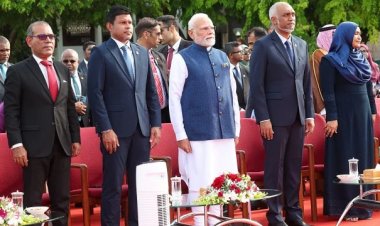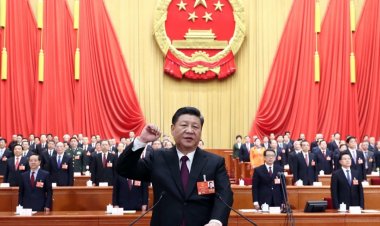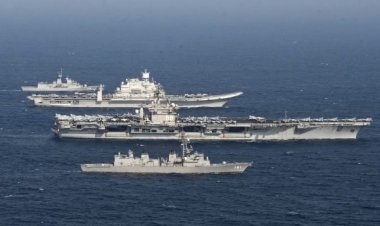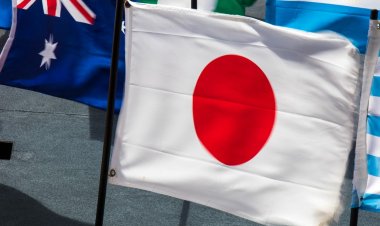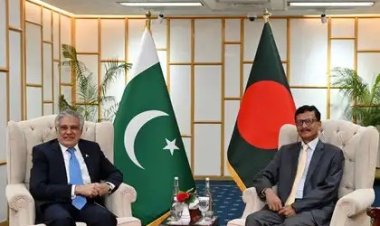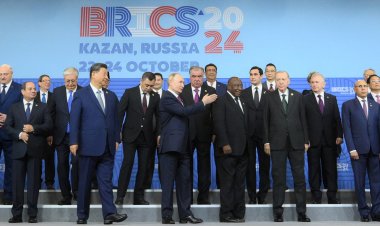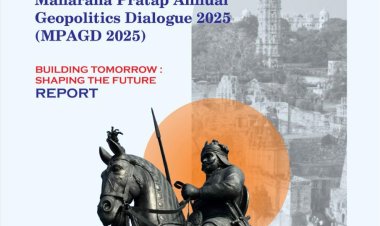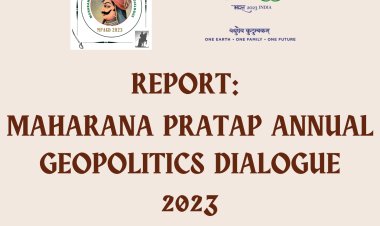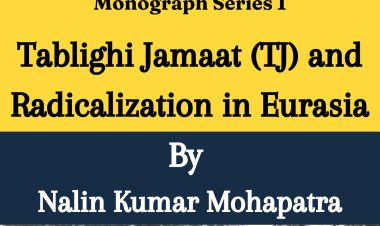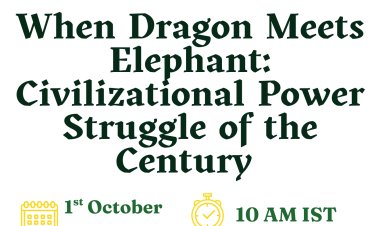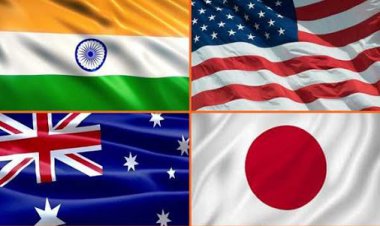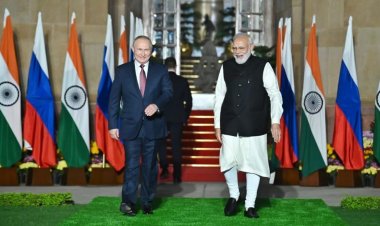India's Invitation to Australia for Observing Maritime Developments: A Strategic Move in Contemporary Diplomacy
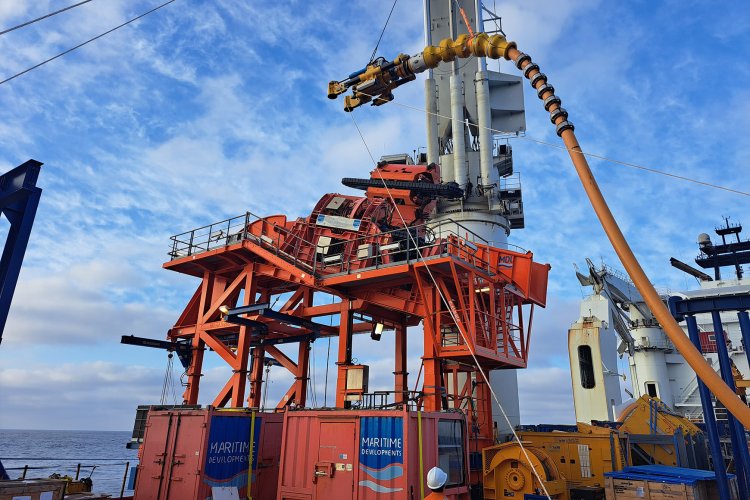
Analysis
By Tanmay Mathews Kottuppalli, Anusreeta Dutta and Zahid Sultan
India has invited Australia to be a part of its newest marine development as a smart diplomatic move. At first glance, this looks like a normal military diplomatic move: keeping the door open for a partner you care about. But this actually shows a bigger geopolitical goal: to build trust, change how security works in the area, and show that the Indo-Pacific maritime region is open and honest.
The Indo-Pacific region is more than just a place on a map; it's also a place where critical business, security, and diplomacy meet. The economy and security systems around the world depend on stable maritime routes. For example, oil is shipped through the Malacca Strait and other important choke points in the South China and Andaman Seas. India's choice to ask Australia to keep an eye on its maritime progress is important in a world that is changing dynamically.
A Gesture That Says More Than Words
India's invitation to Australian observers comes at a time when both countries are rethinking how they can work together on security. It makes sense that they are getting closer to each other as part of the Quadrilateral Security Dialogue (Quad), which also includes Japan and the US. In the recent past, the Quad has transformed from a loosely organized group of allies to a more active place to cooperate on security, share technology, and keep an eye on the maritime domain.
India is trying to build trust by letting Australia see its maritime projects. This trip is more than just a technical one; it's also a way to send strategic messages. It sends a message to both regional partners and possible competitors that India is willing to work openly with other countries that want to keep the rules-based order at sea.
The Indo-Pacific is going through a structural change. The disruptive rise of China as a maritime power, its aggressive actions in the South China Sea, and its growing presence in the Indian Ocean Region (IOR) have led to countries in the area rethinking their maritime strategy. At the same time, piracy, illegal fishing, and climate change-related disasters have shown that there are several other frontiers where countries can work together.
India has used the Indian Ocean Region as a strategic backyard for a long. The geographic advantage of being a peninsula in the Indian Ocean and the presence of forward operating bases in the Andaman and Nicobar Islands helped India remain a watchdog over strategic shipping routes. In the past few years, New Delhi has made a lot of progress in its naval capabilities by building new warships, expanding the area under its grid monitoring, and upgrading its coastal radar networks. By building new integrated coastal security hubs and working with partner navies, it has been able to do more.
Because of this, it would be smart to ask Australia to keep an eye on these changes. As both countries strengthen their defense ties with each other through agreements like the Mutual Logistics Support Arrangement and more joint naval exercises, this happens. It also shows how India's approach to the sea has changed over time, from thinking about land to thinking about the sea and from being reactive to being proactive about security.
Coming Together of Strategic Interests
India and Australia are in distant corners of the Indian Ocean but are united by their strategic goals. Both countries are democracies and are extensively dependent on safe maritime trade routes. Strategic circles in both countries agree that the Indo-Pacific region is crucial for their long-term safety and economic growth. Both are wary of moves that only benefit one side and upset the balance of power in the area.
This convergence has led to collaborative efforts in the last ten years. Over time, the two countries' navies have worked together more often than ever. They took part in the annual Exercise Malabar, have held high-level talks about strategy, and made plans to share defense technology. As an observer in India's maritime exercises, Canberra is taking a natural step forward in this growing partnership.
Australia is also a key partner in India's "Act East" and Indo-Pacific initiatives due to its strategic location. Cementing this marine alliance will help both countries work together better to deal with security threats, humanitarian disasters, and strategic emergencies.
Sending a message to the Region and beyond
This invitation is like any other diplomatic act in that it has many meanings. India sends a clear message to its partners and the region in general by letting Australian observers access its most recent maritime developments.
First, it presents India as a responsible security actor who values collaboration over acting independently. This is in stark contrast to how other regional groups are known for keeping things secret. Second, it reassures smaller Indo-Pacific countries that India and its partners are committed to maintaining maritime routes and freedom of navigation open without infringing on regional sovereignty. This can help keep things stable, especially in places where two opposing forces are getting more and more stuck. Third, it lets enemy countries know that India is not alone and that its alliances, strategic partnerships, and capabilities are all getting stronger. In modern diplomacy, even small signals are important because how people see things often determines who has power.
Modern Maritime Diplomacy: Visiting Ports and Watching Strategically
Port calls, symbolic visits, and joint announcements constitute traditional defense diplomacy. But marine diplomacy today has grown to be more than just ceremonial gestures. It needs ongoing participation, continuous engagement and collaboration, and trust-building measures through operational exposure.
India’s willingness to give up its naval infrastructure, exercises, and capabilities to Australia shows that its strategy has evolved with the needs of the time. The focus is on building layers of strategic trust that will eventually lead to better cooperation, whether it's in countering submarine threats, exchanging information, or working together on humanitarian projects.
Maritime diplomacy has also become a very important part of India's foreign policy. The Indian Ocean Rim Association (IORA) and the Indian Ocean Naval Symposium (IONS) are two groups that meet in New Delhi. Its maritime activities are meant to help make frameworks for collective security, build trust among regional partners, and balance geopolitical pressures when there are no formal alliances.
Canberra's Strategic Math
The invitation is important for Australia in a strategic and symbolic way. Canberra is rethinking its defense strategy due to the increasing ambiguity in the Indo-Pacific region's strategic landscape. The fact that Australia is a member of AUKUS, spends more on defense, and is more involved with the Quad shows that it has changed.
India's invitation gives Australia a chance to learn more about the Indian Navy's future technological and operational advances. It also lets people plan together, patrol at the same time, and share information. Canberra can get a better overall view of the situation in a region where marine activity is growing, thanks to this kind of access. It also makes it easier to work with an important partner.
A Base for Stability in the Region
This breakthrough is more significant as it has the potential to enhance the Indo-Pacific collective security framework. It helps create an environment where marine issues can be dealt with through cooperation instead of competition by building stronger ties between states that think the same way. It also works well with other regional projects, such as the Indo-Pacific Economic Framework for Prosperity (IPEF) and Quad-led working groups on important technologies, infrastructure, and climate resilience. All of these steps aim to improve maritime security, and India's direct support of that goal through its relationship with Australia is a good example. Trust is often more important than treaties in today's world. India is building strategic trust by asking Australia to watch what it does at sea. The goal of this planned diplomatic move is to strengthen alliances, to send a message to the people of the region, and to let the world know that working together, not fighting, is the best way to keep the Indo-Pacific safe.
This is how modern diplomacy works: you don't show off; you stay calm and steady and work out the differences. As India emerges as the most significant region of the 21st century, even small actions will create ripple effects on the order in the Indo-Pacific. India and Australia working together more and more at frontiers shows how the geopolitical landscape is changing, with the open sea being a place for both cooperation and competition.
Disclaimer: This paper is the author’s individual scholastic contribution and does not necessarily reflect the organisation’s viewpoint.
About the authors:
Tanmay Mathews Kottuppalli is a political research analyst.
Anusreeta Dutta is a columnist and climate researcher with prior experience in political
research and ESG analysis.
Zahid Sultan is an Independent Researcher having a PhD in Political Science.

